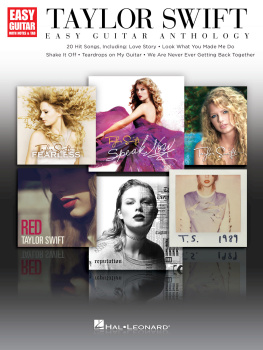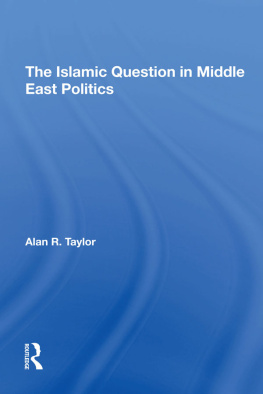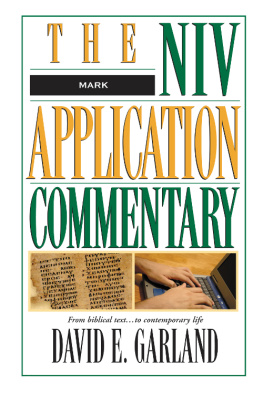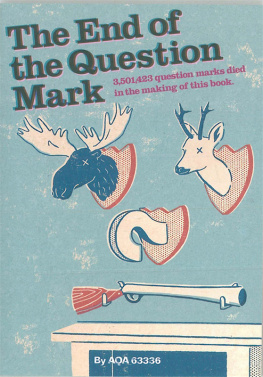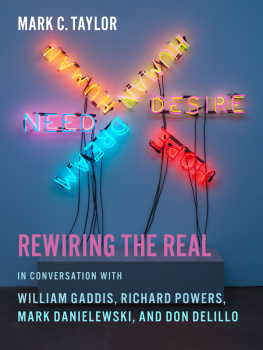Mark C. Taylor - The Picture in Question
Here you can read online Mark C. Taylor - The Picture in Question full text of the book (entire story) in english for free. Download pdf and epub, get meaning, cover and reviews about this ebook. publisher: University of Chicago Press, genre: Science. Description of the work, (preface) as well as reviews are available. Best literature library LitArk.com created for fans of good reading and offers a wide selection of genres:
Romance novel
Science fiction
Adventure
Detective
Science
History
Home and family
Prose
Art
Politics
Computer
Non-fiction
Religion
Business
Children
Humor
Choose a favorite category and find really read worthwhile books. Enjoy immersion in the world of imagination, feel the emotions of the characters or learn something new for yourself, make an fascinating discovery.

- Book:The Picture in Question
- Author:
- Publisher:University of Chicago Press
- Genre:
- Rating:3 / 5
- Favourites:Add to favourites
- Your mark:
- 60
- 1
- 2
- 3
- 4
- 5
The Picture in Question: summary, description and annotation
We offer to read an annotation, description, summary or preface (depends on what the author of the book "The Picture in Question" wrote himself). If you haven't found the necessary information about the book — write in the comments, we will try to find it.
The Picture in Question — read online for free the complete book (whole text) full work
Below is the text of the book, divided by pages. System saving the place of the last page read, allows you to conveniently read the book "The Picture in Question" online for free, without having to search again every time where you left off. Put a bookmark, and you can go to the page where you finished reading at any time.
Font size:
Interval:
Bookmark:
The Picture in Question
The Picture in Question
Mar\ Tansey and the Ends of Representation
Mark C. Taylor
The University of Chicago Press I Chicago and London
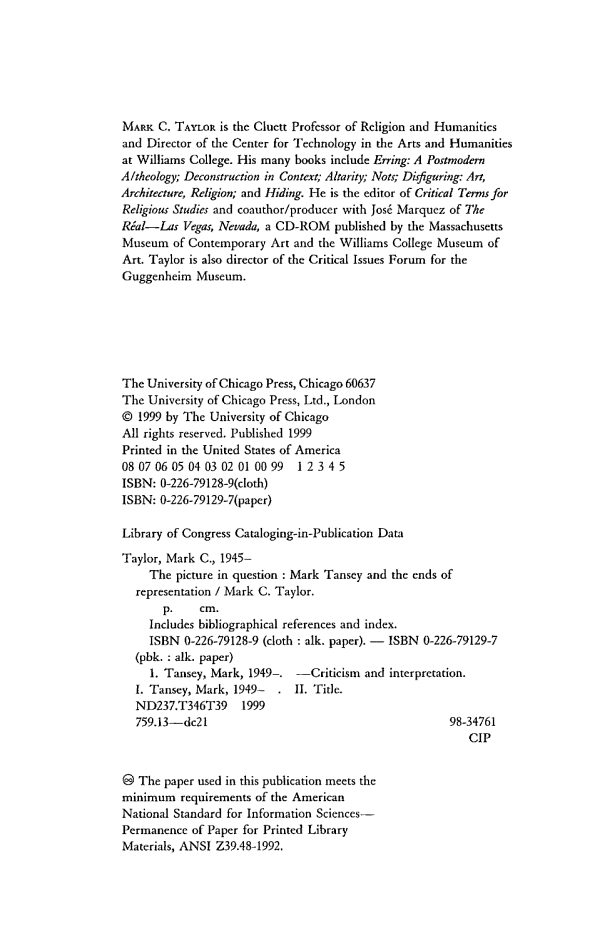
For Louise Bremerman
Preface
On a late August afternoon in 1990 I was leaving the Media Lab at MIT, where I had spent the day exploring a future that was considerably nearer than I had realized. Still reflecting on the puzzles and possibilities of strange new cyberworlds and virtual realities, I stepped into an elevator and noticed a small poster for an exhibition of Mark Tansey's paintings in a nearby building. Rushing into the gallery only a few minutes before it closed, I was astonished by what I saw. Several years earlier, I had been intrigued enough by Tansey's pictures to use his Doubting Thomas on the cover of my book Altarity. While I had not studied his work in detail, I sensed then that his paintings pose many of the same questions that I explore in my writings. In the years after Altarity appeared, I began a sustained investigation of twentieth-century visual arts. For some reason, however, I lost touch with Tansey's work. When I rediscovered it at MIT, my earlier suspicions about the similarity of our preoccupations and trajectories seemed to be confirmed.
Though I do not remember all of the pictures in this small exhibition, two works made a lasting impression on me: White on White and The Bricoleur's Daughter. In addition to showing these paintings, Tansey exposed some of his strategies for picture making by displaying detailed preparatory studies for The Bricoleur's Daughter: With the gallery attendant announcing closing time and beginning to turn out the lights, I had only enough time to cast a quick glance at these studies. What I found most fascinating was their inclusion of printed texts. In the midst of Tansey's collaged sketches and photocopies were heavily underlined and annotated passages from Plato, Levi-Strauss, and, most extensively, Derrida. In the brief moment of my glance, I realized that Tansey and I were approaching similar problems from different directions. While I had been moving from a study of modern and postmodern philosophy to an examination of painting, Tansey had been extending his critique of modernist painting through an investigation of postmodern philosophy and criticism. Furthermore, the writers he found most helpful were, for the most part, the very same writers who had been guiding my work. Having seen this much, I knew I had to see more.
Repeatedly returning to Tansey's work during the past several years, I have continued to be impressed not only by the quality of his paintings but also by the care with which he reads and responds to different philosophical texts. Unlike so many twentieth-century artists and critics, Tansey realizes that representation and figuration are very complex and, in the final analysis, remain unavoidable. His sophisticated understanding of the Western philosophical tradition enables him to grasp the far-reaching implications of the artistic issues he so thoughtfully probes.
While pondering Tansey's paintings and reflecting on the problems they pose, I have begun to achieve greater clarity about my own work. Though the characters are not always the same, Tansey's paintings plot a story that parallels the philosophical and theological tale I have been developing for many years. Whether this story is mine or his, I do not knownor do I think it matters. What I do know is that living with Tansey's pictures has opened new ways for me to think through old preoccupations. From my early studies of modern philosophy and theology in the writings of Hegel and Kierkegaard, through lengthy considerations of structuralism and poststructuralism, to more recent forays into chaos and complexity theory, I have found myself returning again and again to a single problem: the intricate interplay between temx porality and representation in human existence. A paradoxical problem in human life, I have long believed, is not how to overcome time but how to affirm its passage by embracing the arising and passing away that does not arise or pass away. Nothing lasts because all is in endless transition. Time, in other words, is the inescapable medium of our existence. For those with eyes to see, this wisdom is implicit in the disruptive faults and fissures as well as the turbulent cataracts and clouds of Tansey's most complex and provocative paintings.
It may be appropriate that a book devoted to the "end(s) of representation" should have no images. Nonetheless, when I initially proposed this study, I expected it to include representations of approximately thirty of Tansey's paintings. Tansey, for his part, agreed to collaborate by selecting for the book previously unpublished studies of some of his most important works, and we met twice to discuss the format of the book and to begin the process of deciding which studies would be most effective. In the months between these conversations and the completion of the manuscript, Tansey had a change of heart and refused to have any of his work reproduced. Though several personal and professional factors seem to have contributed to this about-face, the most interesting and substantive reason he offered was his fear that my interpretation would reinforce the widespread criticism of his work for being primarily illustrative. He repeatedly emphasized that he wanted to shift directions by moving from what he described as a top-down to a bottom-up approach that would allow the pictures to speak for themselves, and he asserted that the publication of my book would make it difficult if not impossible for people to appreciate this change in his work.
This unexpected turn of events is ironic. The ideas Tansey explores have always been my point of contact with his work, and over the years he and I have had many conversations about difficult theoretical issues. At times, indeed, it seemed to me that Tansey's painting and my writing mirrored one another in pursuit of the same philosophical problems. From my point of view, the distinction between a top-down and a bottom-up approach is specious. Furthermore, no picture speaks for itself, least of all when concept and image, xi idea and representation, theory and practice are as inseparable as they are in Tansey's pictures. Claims to the contrary notwithstanding, Tansey, unlike some of his harshest critics, not only shares this insight but continues to explore its implications in his work. Of course, to stress the importance of a philosophical or theoretical interpretation of Tansey's art, as I do in this book, is not to deny the relevance of other accounts of his work.
For the convenience of readers who are not already familiar with Tansey's paintings, I have included a list of references indicating where reproductions of his work can be found. With the exception of one painting (Transition Team), all the pictures I discuss have been published in books or catalogs that are readily available. Many even circulate freely on the World Wide Web.
As I look back on that August afternoon eight years ago, Tansey's work now seems timely in new ways. What I saw on display at the Media Lab was a world in which reality and image rapidly become indistinguishable. When the virtual seems real and the real appears virtual, many artistic, philosophical, social, and political questions of representation assert their urgency anew. Far from avoiding or repressing representation, we must learn how to reconceive its ends by finding different ways to figure and refigure the complex networks that constitute the media of our lives. By putting the picture in question, Tansey forces us to confront issues that extend far beyond the painted surface of the canvas. The longer one studies his work, the clearer it becomes that, in a culture increasingly governed by images and representations, these pictures are not only good to loo\ at but are also good to thin\ with. To think with Tansey is to look at ourselves and our worlds differently. It is toward this end that the following pages are directed.
Next pageFont size:
Interval:
Bookmark:
Similar books «The Picture in Question»
Look at similar books to The Picture in Question. We have selected literature similar in name and meaning in the hope of providing readers with more options to find new, interesting, not yet read works.
Discussion, reviews of the book The Picture in Question and just readers' own opinions. Leave your comments, write what you think about the work, its meaning or the main characters. Specify what exactly you liked and what you didn't like, and why you think so.

